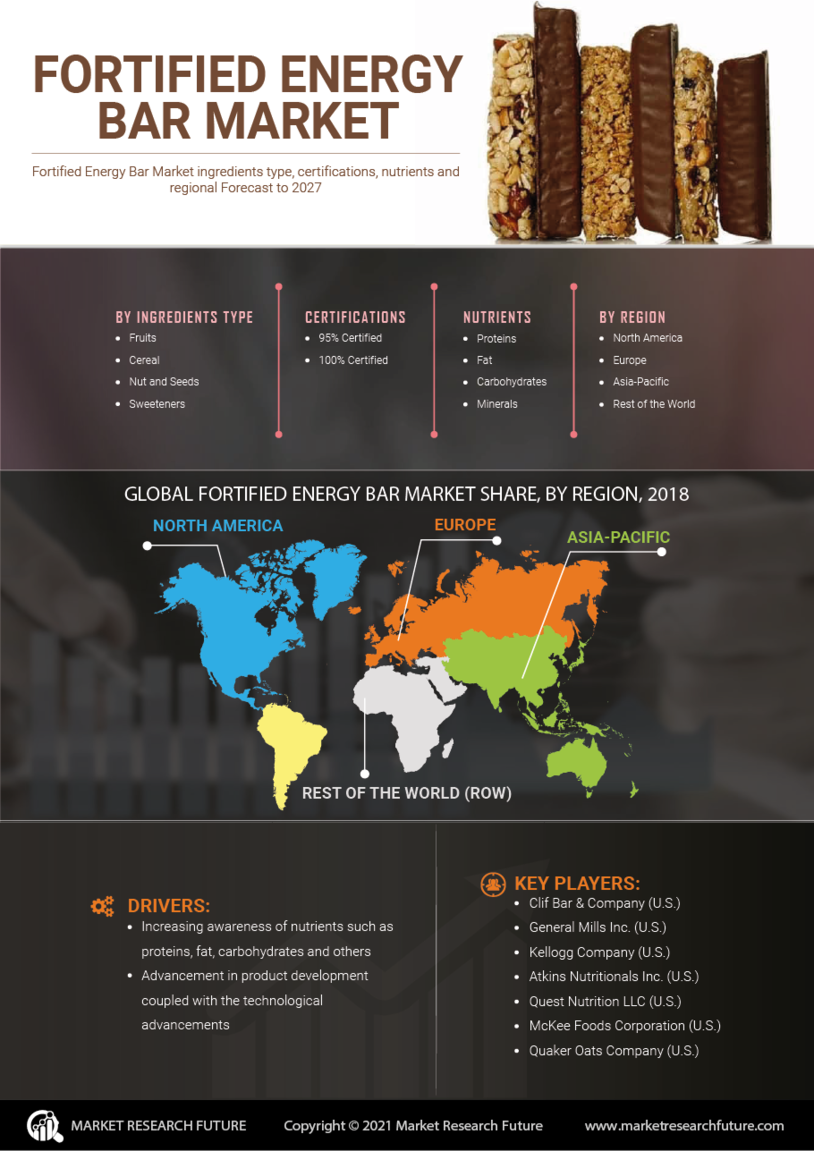Rising Health Consciousness
The Fortified Energy Bar Market is experiencing a notable surge in demand due to the increasing health consciousness among consumers. Individuals are becoming more aware of the nutritional value of their food choices, leading to a preference for products that offer health benefits. This trend is reflected in the market, where the fortified energy bar segment is projected to grow at a compound annual growth rate of approximately 6.5% over the next five years. Consumers are actively seeking energy bars that are fortified with vitamins, minerals, and protein, which aligns with their health goals. As a result, manufacturers are innovating to create bars that cater to this demand, incorporating superfoods and natural ingredients to enhance their appeal. This shift towards healthier snacking options is likely to continue driving growth in the Fortified Energy Bar Market.
Flavor Diversity and Customization
The Fortified Energy Bar Market is witnessing a dynamic shift towards flavor diversity and customization. Consumers are increasingly seeking unique and exciting flavors that cater to their personal preferences. This trend is evident as brands introduce a wide array of flavors, ranging from traditional chocolate and peanut butter to exotic options like matcha and acai. Market Research Future suggests that flavor innovation is a key driver for consumer engagement, with approximately 60% of consumers willing to try new flavors. Additionally, customization options, such as the ability to select specific ingredients or nutritional profiles, are becoming more popular. This focus on flavor and personalization not only enhances consumer satisfaction but also encourages brand loyalty. As a result, the Fortified Energy Bar Market is likely to continue evolving to meet these consumer demands.
Sustainability and Ethical Sourcing
The Fortified Energy Bar Market is increasingly influenced by consumer preferences for sustainability and ethical sourcing. As awareness of environmental issues grows, consumers are gravitating towards products that are produced with sustainable practices and ethically sourced ingredients. This trend is particularly relevant in the fortified energy bar segment, where brands are adopting eco-friendly packaging and sourcing ingredients from responsible suppliers. Market data indicates that approximately 50% of consumers are willing to pay a premium for products that align with their values regarding sustainability. This shift is prompting manufacturers to innovate not only in product formulation but also in their supply chain practices. As sustainability becomes a key purchasing criterion, the Fortified Energy Bar Market is likely to see a rise in demand for products that reflect these ethical considerations.
Increased Demand for Convenience Foods
The Fortified Energy Bar Market is significantly influenced by the rising demand for convenience foods. As lifestyles become increasingly hectic, consumers are seeking quick and easy snack options that do not compromise on nutrition. Fortified energy bars serve as a convenient solution, providing essential nutrients in a portable format. Recent data indicates that nearly 70% of consumers prefer snacks that can be consumed on-the-go, which positions energy bars favorably in the market. This trend is particularly prevalent among busy professionals and active individuals who require sustained energy throughout the day. Consequently, manufacturers are focusing on creating energy bars that are not only nutritious but also easy to carry and consume. This emphasis on convenience is expected to propel the growth of the Fortified Energy Bar Market in the coming years.
Growing Fitness and Sports Nutrition Sector
The Fortified Energy Bar Market is benefiting from the expansion of the fitness and sports nutrition sector. As more individuals engage in fitness activities and sports, there is a corresponding increase in the demand for nutritional products that support performance and recovery. Fortified energy bars are often marketed as ideal pre- or post-workout snacks, providing essential nutrients to fuel workouts and aid in recovery. Recent statistics indicate that the sports nutrition market is projected to reach a valuation of over 30 billion dollars by 2026, highlighting the potential for growth in the fortified energy bar segment. This trend is further supported by endorsements from athletes and fitness influencers, which enhance the credibility of these products. Consequently, the Fortified Energy Bar Market is poised for substantial growth as it aligns with the needs of health-conscious consumers and fitness enthusiasts.


















Leave a Comment